Divided over leadership, but united in goals, women march and rally in New York
On Saturday, the day designated to mark the second anniversary of the Women’s March, women in New York City could march, rally or protest in a variety of locations and under different auspices, but the messages, and even one of the messengers, weren’t that different.
In the past, New York City’s march was led by Women’s March Alliance, a grassroots organization unaffiliated with the national organization Women’s March Inc., which organized the original rally in Washington in 2017. This year, it proceeded, as scheduled, with its third annual march and rally on the Upper West Side of Manhattan.
Meanwhile, downtown, the New York City chapter of Women’s March Inc. held a rally — with no marching — co-sponsored by the New York Immigration Coalition, and Girls for Gender Equity.
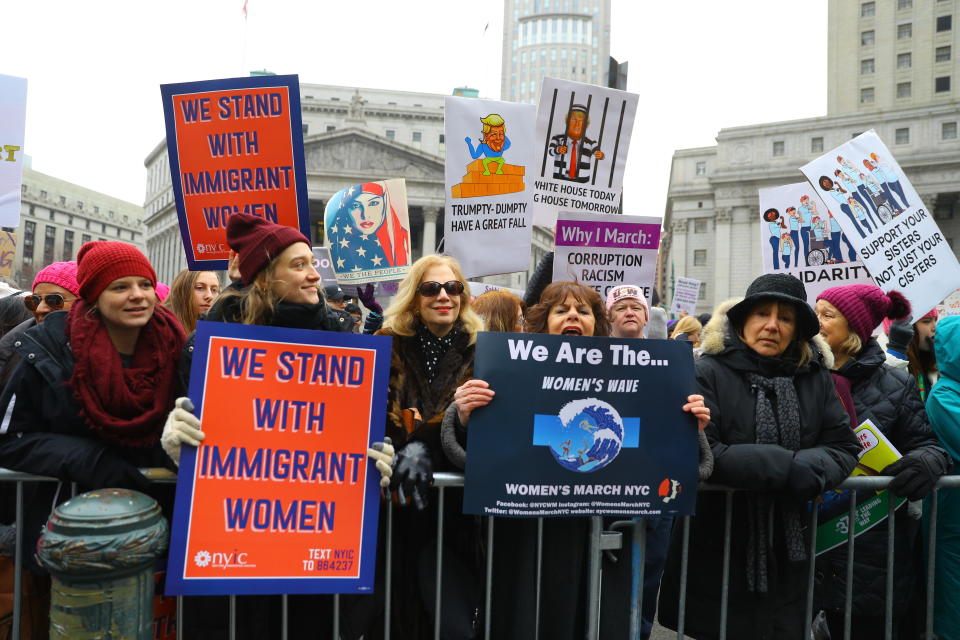
Both events unveiled strategies for expanding their supporters’ electoral power. The march announced its new campaign, “March to the Polls 2020,” and set a goal of turning marchers into voters. The rally focused on elevating the voices of immigrants and women of color and highlighting issues for Congress.
There was even a third “non-march” in midtown organized by an anti-Trump action group, Rise and Resist, for disabled marchers who couldn’t participate in either the march or rally.
The rift between the New York group and the national organization stems from the reluctance of Women’s March Inc. leaders to cut ties with the anti-Semitic, antigay Nation of Islam leader Louis Farrakhan. The controversy has plagued the Women’s March for nearly a year and has become a source of discord in communities outside Washington, where protesters had to decide if they would align with the national group, or with a separate organization, March ON, or neither.
Reported attempts at merging the two New York events never came to fruition, leaving marchers to choose which side of the city they wanted to be on.
At the rally
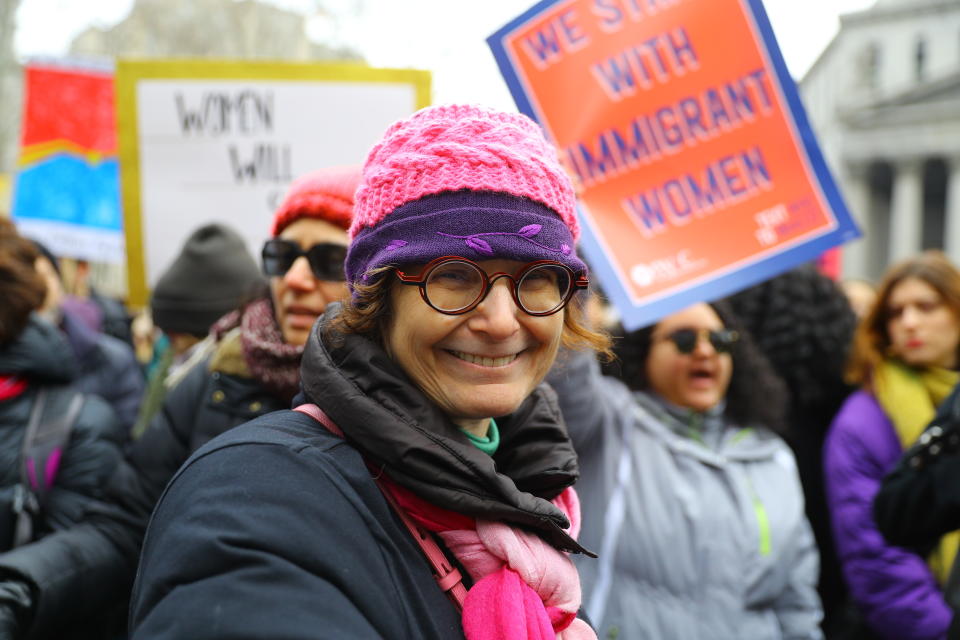
Marchers at the rally decried the accusations of anti-Semitism against the Women’s March Inc. Many came because of the focus on women of color and immigrants.
“This is not about us,” said Jan Lisa Huttner, a Jewish feminist activist who marched with the Alliance the last two years, but made a point of attending the rally this year instead. “This is about the women who are specifically targeted by this administration. The Trump administration is not targeting Jews. African-American, LGBT, Hispanic and Muslim women have been targeted.”
Faith Wellington marched in D.C. two years ago and this year brought her two daughters to rally on behalf of separated families of immigrants from Central America. “I want them to see the unity people have here,” she said. “They’re here to give a voice to the woman and migrant children at the border who don’t have a voice today.”
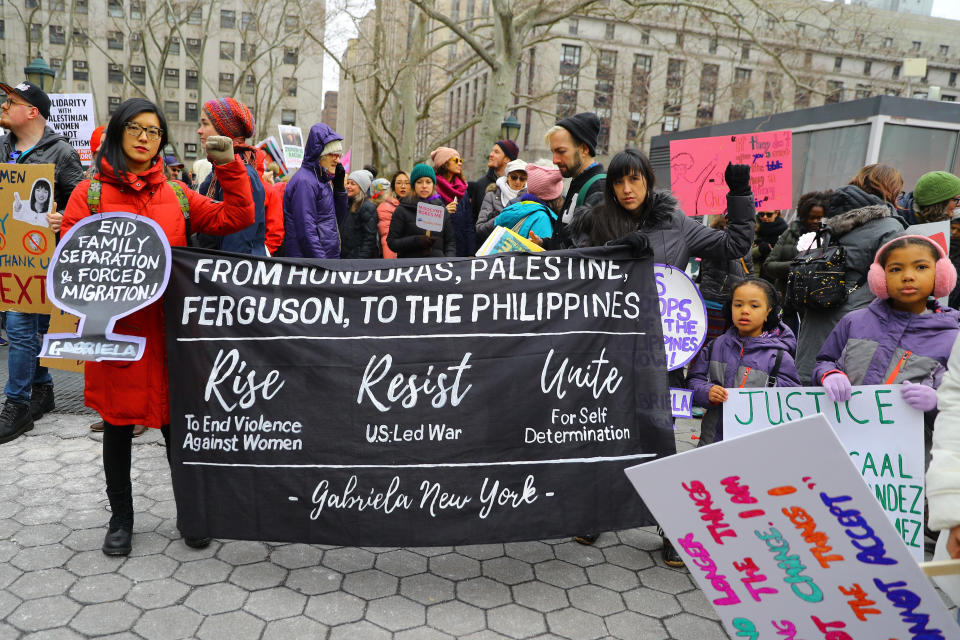
Wellington joined Petra Magro, who is a chairperson of the left-wing Filipino organization Gabriela. When asked why the group chose the rally instead of the March, Magro said, “This one is intersectional and represents people’s issues … and people of color are well-represented here.”
“I didn’t think a lot about the march on the Upper West Side,” said Agunda Okeyo, founder of the Women’s March N.Y. chapter. “I knew I wanted to do a rally that was reflective of New York and its different communities.”
Leslie Camacho, a Mexican-American college freshman was marching for the first time, said “I’m marching to stand up for my family.” She lives in a mixed-status family and came to the rally for her mother, who is an immigrant. “Who knows what will be decided about immigration and what will happen to my family?”
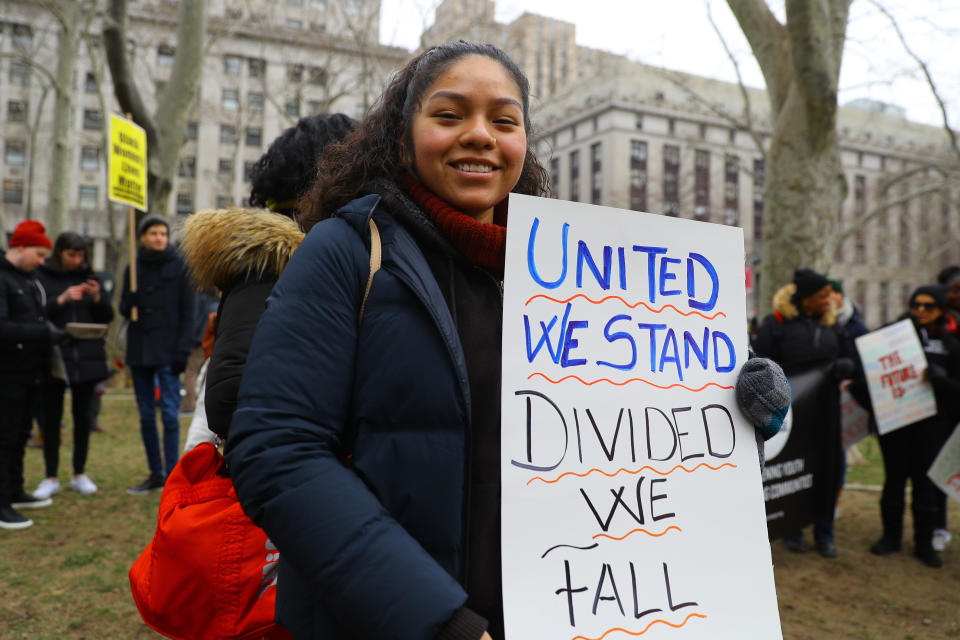
Ellen Florentine didn’t know there were two separate Women’s March events. “I don’t care who’s in charge,” she said. “We want to get Trump out of office.”
“Both [events] are problematic in different ways,” said another attendee, Bryony Romer. “There are accessibility issues with the march and questions about leadership in regards to anti-Semitism in the other. The important thing is not to walk away from things that are flawed, but to work with them and move them forward.”
For first-time marcher Maha Akhtar, attending with a friend, Omera Begum, the Women’s March Alliance event felt like “kind of an offshoot, throwing accusations against Women’s March [Inc.] and creating division. “We’re here as Muslim women and we want to say to all women, ‘We are with you,’ and this is our country too,” said Akhtar.
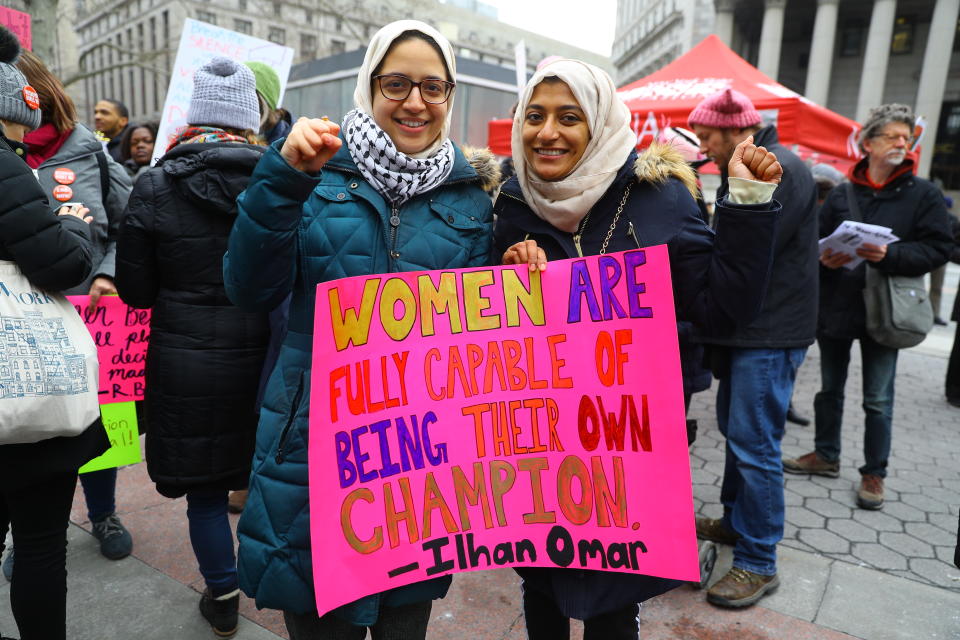
Another woman attending her first rally was Gizelle Marie, an organizer of New York Stripper Strike. “It’s usually a white women’s march,” she said. “People don’t see sex workers as human, especially sex workers of color. But I hope my words can impact people to make them realize we’re here with them and they need to be here with us too.”
PHOTOS: Protesters take part in third annual Women’s March »
Kathleen Wolfe, 49, said she chose the rally specifically because it was attended by the pioneering feminist Gloria Steinem. “I go where Gloria [Steinem] goes,” she said as she pressed toward the stage.
For her part, Steinem chose to attend the rally “because this is the only rally that has the support of 50 different community organizations. It is in itself a movement.” she told Yahoo News, describing the 2017 march in New York, in which middle-class white women were heavily represented, “not inclusive.”
“But whether it’s rallies, marches or meetings, it’s all one movement.”
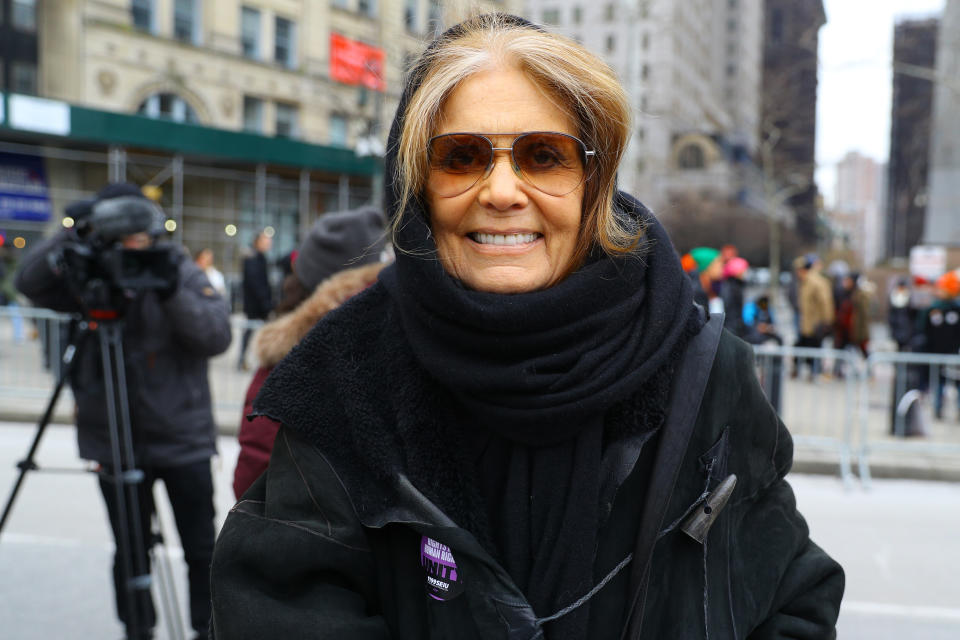
Steinem spoke at the rally, along with others, including New York City’s first lady, Chirlane McCray, and the rising Democratic star Rep. Alexandria Ocasio-Cortez, D-N.Y., who also addressed the uptown march.
Steinem, 84, added, “a lot of progress has been made, but there’s room for more. The good thing about being old is that you know times were worse. And the good thing about being young is that you know they can be better.”
At the march
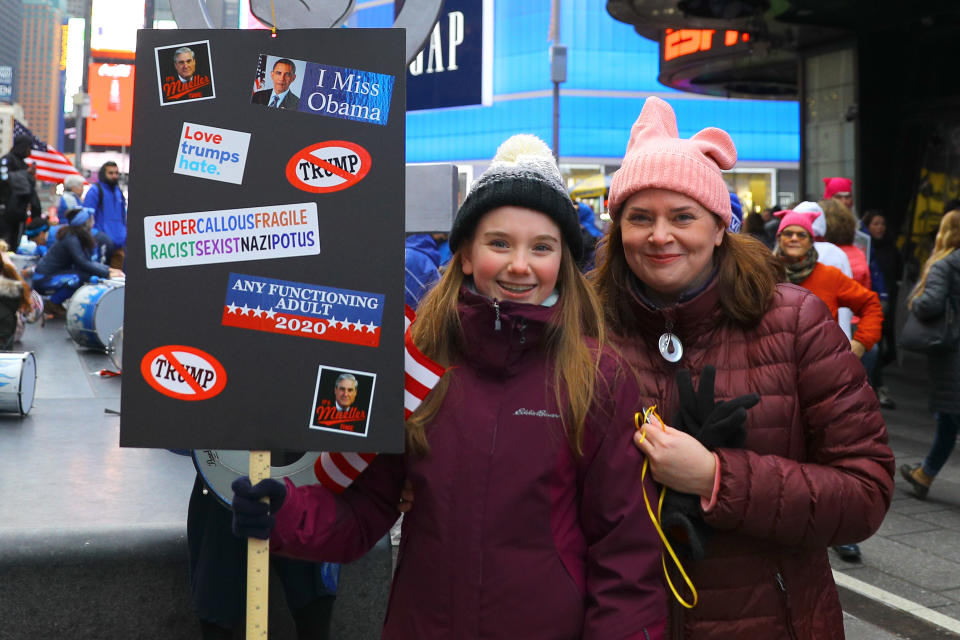
Karen Marron did her research before choosing between the march and rally. She said she disagreed with the way the leaders of Women’s March Inc. responded to accusations of anti-Semitism. “I was happy to see another alternative.”
“To hear Alexandria Ocasio-Cortez speak felt like a part of history,” said Marron. “And it was special to have my daughter hear her, too.”
A group of Ocasio-Cortez supporters was surprised to see the new congresswoman, who is still getting settled in Washington, at the march. “AOC represents the people,” said Allie Horton. “She’s one of us. So it’s great to see her at this event when there are so many things she could be doing right now, like visiting her family.”
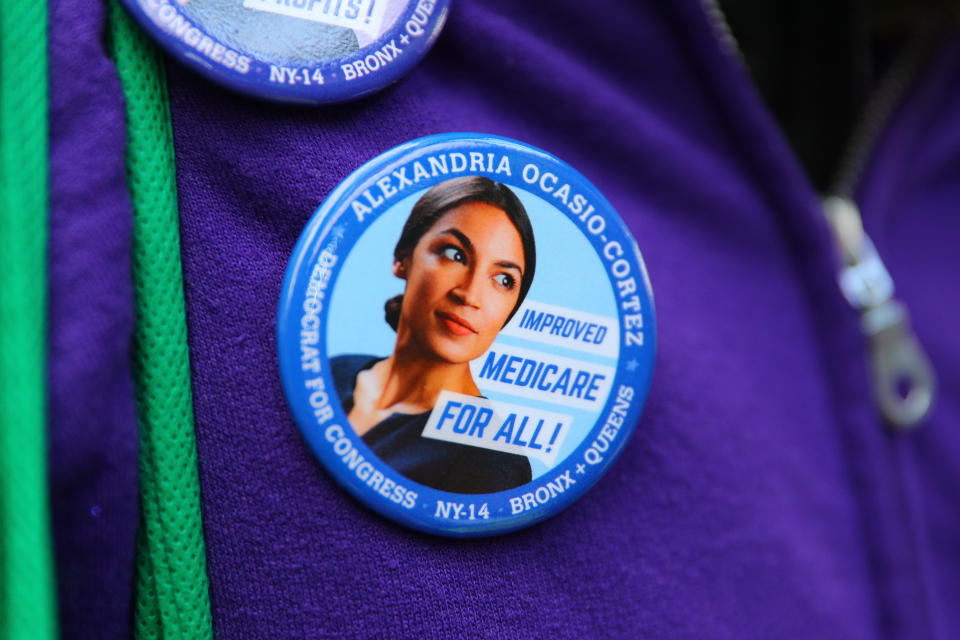
Ana Rodriquez took time off from her vacation to march and was surprised to learn there was another rally going on downtown. “I was not aware of the separation between the marches, but it’s basically the same at the end of the day. Whether it’s two, three or five marches, it’s more exposure.”
Some women chose on the basis that marching seemed more engaging than listening to speakers at a rally. “It was tough deciding between the two,” said Taryn Luby, who marched in Minnesota in 2017. “But in the end, I wanted to physically march, because it felt impactful and powerful.”
Erica Vasquez, attending the rally with her hometown friends Marie Monteleone, Amanda Castelli and Vicky Murray, sympathized with the feeling. Vasquez described the march as having “fun energy and good vibes.” “I’m loyal to this march, and I felt safe here,” she said. On her way to the march with her friends, she said they were followed for three blocks by a man shouting “Abortion is murder.”
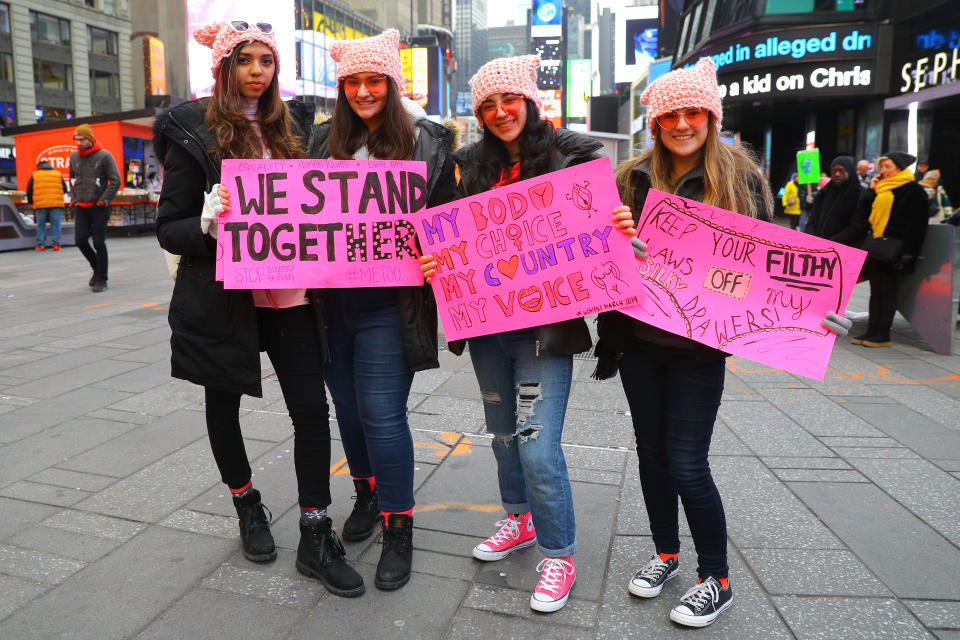
It was unsettling, but they were familiar with opposition to marching.
“My parents thought I was crazy to come here,” said Murray. “They’re conservative and they support Trump.” Castelli, who said her father, a legal immigrant from Italy, is also “very, very much conservative,” said she came here for the movement. They were all wearing pink pussy hats made by Castelli’s mother.
“This [march] has the spirit of what this movement is meant to be,” said Marron, who remained in the neighborhood as the march ended. “Hopefully, it will all come back together as one voice and one movement.”
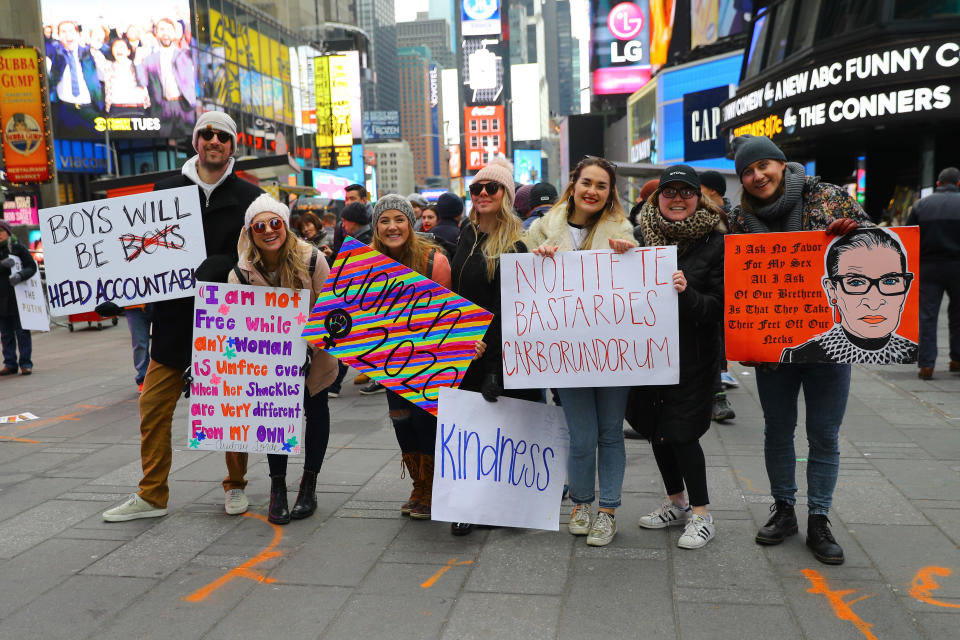
_____
Read more from Yahoo News:
2020 prospect Sen. Klobuchar: It’s ‘difficult to imagine’ voting for Trump AG pick
Someday, Donald Trump will be a former president. The mind boggles.
Despite denials, documents reveal U.S. training UAE forces for combat in Yemen
How the government closure is affecting Americans nationwide
Biden and Warren have a history. If he runs, it may come back to haunt him.



